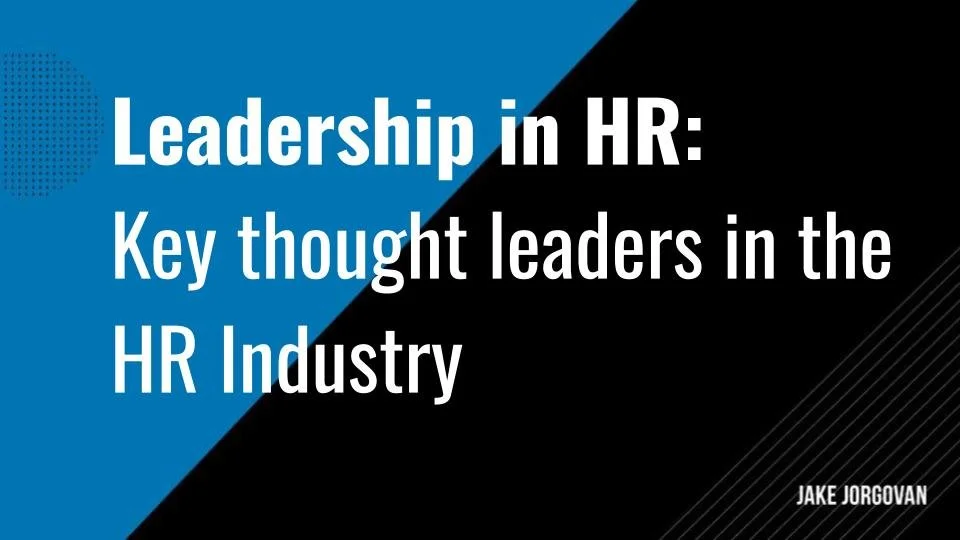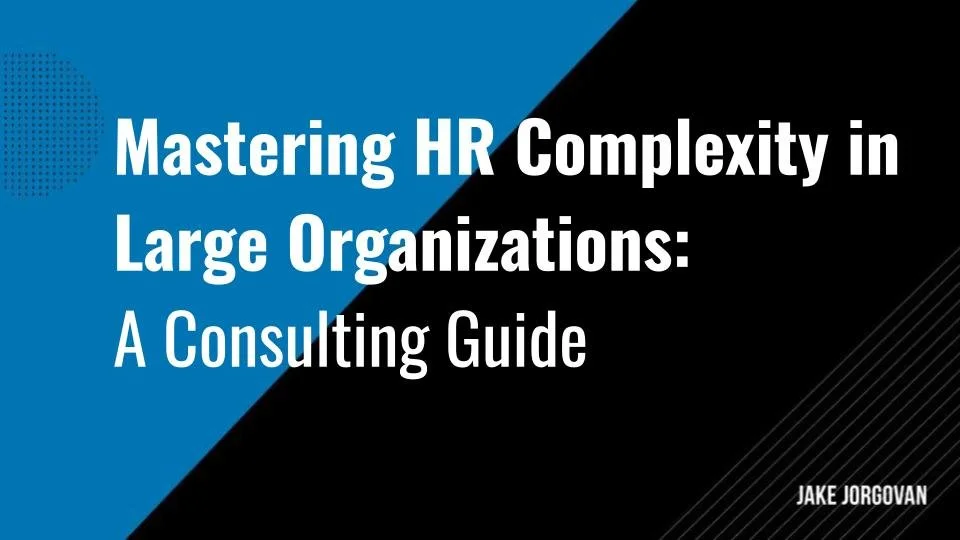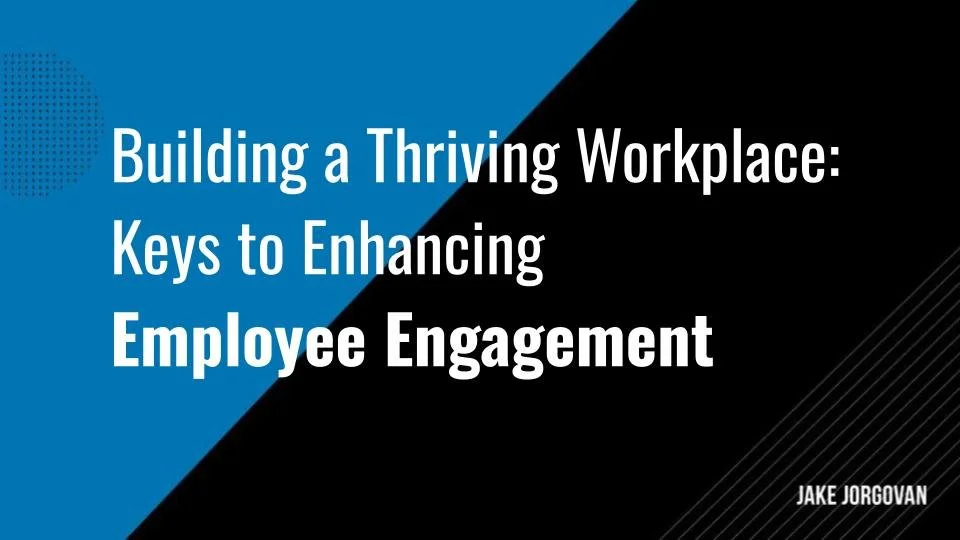Building a Thriving Workplace: Keys to Enhancing Employee Engagement
Disengaged employees can be a concern for many companies. This lack of engagement decreases productivity, innovation, and overall morale.
You’re not alone if you’re struggling with these issues.
Fortunately, you’ve come to the right place to turn things around.
In this article, we’ll explore:
The importance of employee engagement
The tools and methods used for measuring employee engagement
Keep reading to unlock the secrets of building a thriving workplace where every employee feels valued and engaged.
The Importance of Employee Engagement
Employee engagement is crucial for organizational success. Engaged employees exhibit high levels of enthusiasm and commitment to their work. This translates into increased productivity. Engaged workers are more focused, efficient, and goal-oriented. Their higher productivity directly impacts the company's profitability and growth.
Engagement fosters a positive workplace culture. Engaged employees typically share a strong alignment with the company’s values and objectives. This alignment strengthens team cohesion and fosters a collaborative work environment. Such cultures attract and retain top talent, reducing turnover costs. High turnover rates are costly, involving recruitment, training, and lost productivity. Engaged employees are more likely to stay, saving the company these expenses.
Employee engagement also drives innovation. Engaged workers are more invested in their roles, encouraging them to think creatively and propose new ideas. This innovative mindset is essential for companies to adapt and thrive in dynamic markets. Engaged employees often go beyond their basic job requirements, contributing to strategic thinking and problem-solving.
Customer satisfaction is another key benefit. Engaged employees are more likely to provide high-quality service, leading to better customer experiences. By implementing call center software, companies can further improve the quality of customer interactions through streamlined communication and support processes.
Furthermore, employee engagement impacts the company's reputation. Companies with high engagement levels are often viewed as desirable employers. This reputation helps in attracting high-caliber candidates and building a strong brand image.
Finally, engagement is linked to employee well-being. Engaged employees generally have higher job satisfaction, contributing to overall well-being and work-life balance. This aspect is increasingly important in today’s workforce, where mental health and job satisfaction are highly valued.
7 Key Ways to Enhance Employee Engagement
Now that you understand why employee engagement is so valuable let’s review the best ways to enhance this engagement. We’ll share some actionable tips, so keep reading below!
1. Provide Growth and Professional Development Opportunities
To effectively provide opportunities for professional development and growth:
Conduct a thorough skills gap analysis within your organization: Identify the specific skills and knowledge that your employees need to acquire to excel in their roles and contribute to the company's growth. Once identified, create tailored training programs, workshops, or courses that directly address these gaps.
Implement a mentorship program: Have less experienced employees can learn from senior team members. This enhances their skills and fosters relationships and collaboration within the company. Encourage your team to attend industry conferences and seminars, and provide them with the necessary time and resources to do so.
Real Life Example:
Google allows its engineers to spend 20% of their work time on projects that interest them. This policy has led to the creation of some of Google's most significant products, like Gmail and AdSense. This approach keeps employees engaged and motivated, as they feel the company values their personal interests and professional growth. And that fosters innovation.
2. Offer Flexible Working Arrangements
To offer flexible working arrangements effectively, follow the strategies below:
Assess your employees' specific needs and preferences: Conduct surveys or one-on-one meetings to understand their ideal work schedules and environments. This insight will help you create flexible options that truly benefit your staff.
Implement a range of flexible working options: This can be remote work, flexible hours, compressed workweeks, or job sharing. Ensure you have the technology and infrastructure to support these arrangements, like reliable communication tools and secure remote access to company resources.
Pro tip: Establish clear guidelines and expectations around these flexible arrangements. Set specific core hours for team meetings, define response time expectations, and establish performance metrics focusing on output rather than logged hours.
Real-Life Example:
Dell's "Connected Workplace" program offers a variety of flexible working options, including remote work, flexible hours, and part-time positions. As a result, Dell reported increased employee productivity, higher job satisfaction, and reduced turnover. This approach meets the diverse needs of their global workforce and demonstrates a commitment to work-life balance.
3. Facilitate Open and Transparent Communication
To encourage and facilitate open and transparent communication, you can:
Model great communication at the leadership level: Demonstrate openness in your communications, sharing successes and challenges with your team. Foster an environment where feedback is actively sought from all levels of the organization.
Implement regular, structured communication channels: These include weekly team meetings, monthly all-hands meetings, and quarterly town halls. In these meetings, share key company updates, encourage questions, and address concerns. Ensure these sessions are not just top-down; create opportunities for employees at all levels to voice their ideas and feedback.
Invest in a robust internal communication platform: This must support real-time communication and collaboration. Consider a mix of email, chat apps, and project management tools that keep everyone aligned and informed.
Real-Life Example:
The 'Pixar Braintrust' from Pixar Animation Studios, composed of directors and writers, meets regularly to review film projects at various stages of development. In these sessions, candid feedback is provided, fostering a culture of trust and open communication. This approach has been pivotal in maintaining Pixar’s standard of excellence in storytelling and animation.
4. Recognize and Reward Achievements
Follow these steps to effectively recognize and reward employee achievements:
Establish a clear and objective system for assessing achievements: Set specific, measurable goals and metrics that align with your company's objectives. Regularly track and review employee performance against these metrics.
Implement a comprehensive recognition program: This should include formal and informal methods. Formal methods might consist of yearly awards, performance bonuses, or promotions. Consider shout-outs in team meetings, personalized thank-you notes, or small tokens of appreciation like gift cards for informal recognition.
Tailor recognition to the individual: Some employees may value public recognition, while others prefer private acknowledgment. Understanding your team's preferences is key to making your recognition efforts impactful.
Real-Life Example:
Salesforce uses a gamified rewards system where employees earn points for various achievements and contributions. These points can be redeemed for various rewards, from gift cards to experiences. This system incentivizes performance because it makes recognition a fun and integral part of the company culture.
5. Build a Positive and Inclusive Workplace Culture
To foster a positive and inclusive workplace culture, implement the strategies below:
Establish and enforce clear values and behavioral expectations: These must promote inclusivity and respect. These should be more than just words on a page; integrate them into all aspects of your organization, from hiring practices to daily operations.
Encourage diversity in your teams: Not just in demographics but especially in ideas and perspectives. This will help create an environment where everyone feels valued and respected for their unique contributions.
Promote open dialogue about diversity and inclusion: Create safe spaces or forums where employees can share their experiences and perspectives. This could be through regular meetings, anonymous feedback tools, or dedicated discussion groups.
Real-Life Example:
Accenture’s commitment to a culture of equality is an excellent example. They have set public diversity targets and report on their progress annually. Their initiatives include comprehensive training programs, support for affinity groups, and transparent communication about their goals and achievements. This approach has not only improved their diversity metrics but has also enhanced their overall workplace environment.
6. Support Work-Life Balance
To support work-life balance effectively:
Recognize that each employee's situation is unique: Allow employees to manage their work and personal responsibilities in a way that works for them.
Encourage employees to take their allotted vacation time: Respect their time off by not expecting them to answer work calls or emails. This practice reinforces the importance of rest and disconnection for mental and physical well-being.
Provide resources that support life outside of work: This could include offering wellness programs, mental health support, or partnerships with childcare providers.
Real-Life Example:
New Zealand's Perpetual Guardian tested a four-day workweek while maintaining a five-day paycheck. The trial resulted in a happier, more focused, and more committed workforce, with no drop in productivity. This innovative approach challenged traditional work norms and demonstrated a successful model for balancing work and life responsibilities.
7. Solicit and Act on Employee Feedback
To solicit and act on employee feedback effectively, follow these steps:
Establish a systematic approach for gathering input: Utilize diverse methods such as surveys, suggestion boxes, and regular one-on-one meetings to capture a wide range of perspectives. Make it clear that feedback is valued and will be used constructively.
Identify common themes and areas for improvement: Communicate back to your employees what you've heard. This transparency shows that their opinions are taken seriously.
Prioritize the feedback and develop a realistic action plan: Assign responsibility for each action item and set timelines for implementation. Regularly update your team on the progress of these initiatives.
Real-Life Example:
Adobe’s 'Check-In' system replaced their annual performance reviews with a system where managers provide regular, real-time feedback to their team members. This approach has improved communication, performance, and overall employee satisfaction. Adobe has created a more dynamic and responsive feedback system by focusing on ongoing dialogue rather than annual reviews.
Measuring and Analyzing Employee Engagement
Employee engagement measurement and analysis involve specific tools and methodologies. These are designed to evaluate employee involvement, commitment, and satisfaction in their workplace. Understanding these tools and methods is essential for organizations aiming to improve employee engagement and, consequently, their overall performance.
Let's explore these below:
Surveys and Questionnaires: The most common tool for measuring employee engagement. These are structured to gather quantitative data on various aspects of work life. Surveys usually include Likert-scale questions. They measure factors like job satisfaction, company values alignment, and management relationships. Advanced surveys incorporate open-ended questions for qualitative insights.
Pulse Surveys: Short, frequent surveys that track changes in engagement over time. They offer quick insights and are less time-consuming than comprehensive annual surveys. Pulse surveys are useful for monitoring the impact of recent changes or initiatives.
Employee Net Promoter Score (eNPS): A metric derived from asking employees how likely they are to recommend their workplace to others. It’s a straightforward indicator of employee loyalty and engagement. A high eNPS suggests strong employee advocacy.
360-Degree Feedback: This method involves collecting feedback about an employee from their supervisors, peers, and subordinates. It provides a holistic view of the employee's interactions and performance, contributing to understanding their engagement levels.
Exit Interviews: Conducted with departing employees, these interviews provide insights into why employees leave. They help identify patterns or issues affecting engagement that might not be captured through other means.
Focus Groups: Small, discussion-based groups used to explore employee attitudes and perceptions in depth. They complement surveys by providing a qualitative understanding of engagement issues.
Performance Metrics: Analysis of performance data such as sales figures, customer service ratings, or productivity metrics can indirectly indicate engagement levels. High performance often correlates with high engagement.
Engagement Software Tools: Various software platforms are available for conducting surveys, analyzing data, and tracking engagement metrics over time. These tools offer dashboards for visualizing data, making it easier to identify trends and areas needing attention.
Sentiment Analysis: Advanced tools like AI-driven sentiment analysis can evaluate employee feedback, emails, or social media posts to gauge the mood and engagement levels within the organization.
Workplace Analytics: Utilizes data from various sources such as email patterns, meeting frequencies, and collaboration networks to assess how employees interact and engage with their work and colleagues.
Effective analysis of employee engagement involves triangulating data from these tools to get a comprehensive view. It’s important to ensure anonymity and confidentiality to get honest feedback. The data should be regularly reviewed and compared against industry benchmarks for a more accurate assessment. Lastly, engagement initiatives should be tailored based on the analysis to address specific issues and enhance overall employee satisfaction and productivity.
Build a More Engaged Workplace Today
In this article, we explored the various strategies and methods that can significantly boost employee engagement in the workplace. It's all about understanding and effectively implementing the right techniques to create a more dynamic and committed workforce.
As an employer, you can enhance employee engagement by actively listening to your team's feedback and fostering an inclusive work environment. These steps improve morale and contribute to a more productive and positive workplace.
Remember, a little effort in engaging your employees can go a long way in building a thriving business. Take a moment to reflect on these insights and consider how you can apply them to foster a more engaged and motivated team.


































